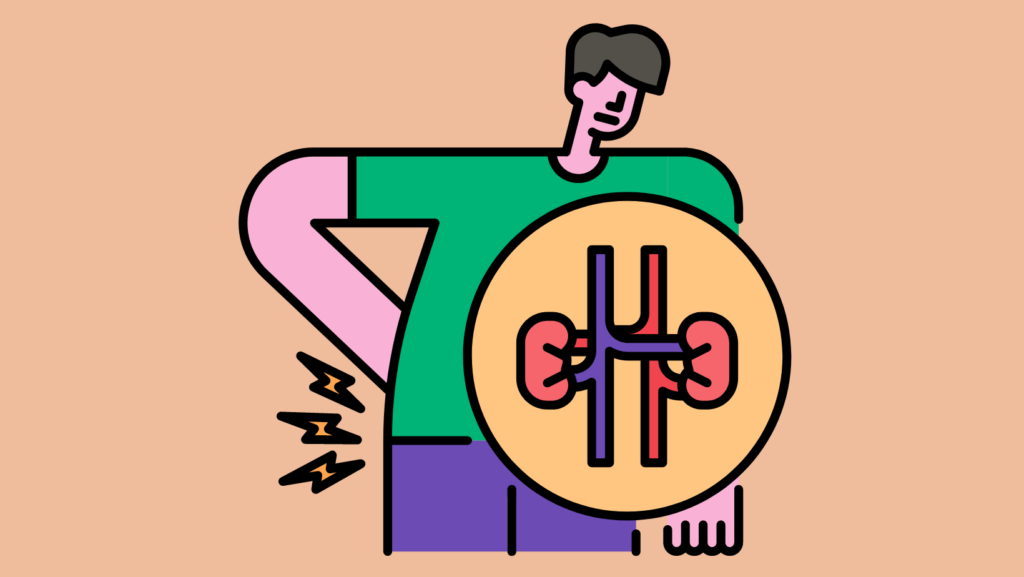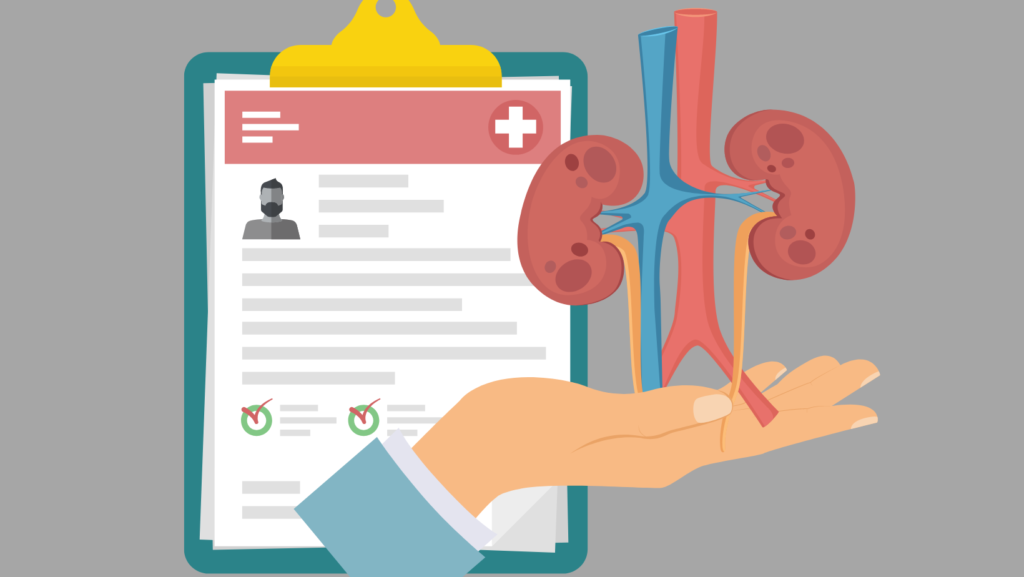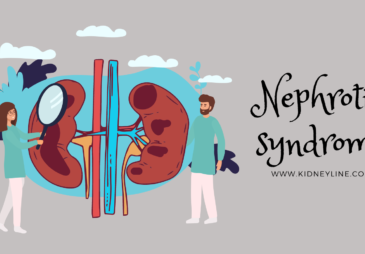It is estimated that about 1 in 20,000 babies are born with polycystic kidney disease. Polycystic kidney disease is also known to affect boys and girls equally. Here is what you should know about polycystic kidney disease.
Key takeaways
- Polycystic kidney disease is a genetic disorder that can be inherited from one or both parents.
- They are fluid-filled cysts that can grow in size and numbers over time. This increase can lead to enlargement of the kidneys and impair its function.
- If you have polycystic kidney disease you might develop symptoms such as back and side pain, headaches, hematuria (blood in the urine), high blood pressure, and frequent urination.
Introduction
Polycystic kidney disease (PKD) is an inherited condition where many fluid-filled sacs, called cysts, grow in the kidneys. These cysts can make the kidneys larger and change their shape. Unlike harmless cysts that can develop later in life, PKD cysts can cause problems.[1]
PKD is a cause of chronic kidney disease (CKD), and it can reduce the function of your kidneys over time. This means the kidneys may not work as well as they should, and this can lead to kidney failure.
This article aims to explain what polycystic kidney disease (PKD) is, the types, symptoms, and all you need to know.
What are the types of PKD?
Polycystic kidney disease is divided into two types namely:
Autosomal dominant polycystic kidney disease (ADPKD)
Autosomal dominant polycystic kidney disease (ADPKD) is the most common form of polycystic kidney disease. It is a genetic condition that is passed down from one parent. It is often diagnosed between the ages of 30 and 50 when symptoms start to show. [2]
Some people with ADPKD may have no symptoms at all. Others may experience pain in their abdomen or back due to the growing cysts in their kidneys. High blood pressure is also a common problem and can further damage the kidneys. Over time, ADPKD can lead to kidney failure. Kidney failure is when the kidneys can no longer function properly.[2]
Autosomal recessive polycystic kidney disease (ARPKD)
This is a rare condition that children inherit from their parents. In ARPKD, there are problems with how the kidneys function. Over time, the kidney may not work as it should and can eventually lead to kidney failure.
ARPKD can cause serious issues shortly after a baby is born. Although, in some cases, the signs may not be obvious until the child gets older. However, the timing and severity of this condition can be different for each child, even within the same family.[3]
Although ARPKD is rare, studies found it to be one of the most common kidney problems that affects young children. It is estimated that about 1 in 20,000 babies are born with ARPKD, and it affects both boys and girls equally.[3]
ARPKD can be a challenging condition. But, with early detection, proper medical care, and support. Children with ARPKD can receive the necessary help to manage their condition and improve their overall health.

What are the signs and symptoms of PKD?
Signs and symptoms of PKD are based on the types, let’s take a look at each of them:
Signs and symptoms of ADPKD
- Headaches
- Frequent urination
- Hematuria (blood in the urine)
- High blood pressure (hypertension)
- Pain in the back and sides, between the ribs and hips. The pain can be short-term or ongoing, mild or severe.
Early signs of ARPKD
This sign often appears in the first few months of life and in the womb. These signs can cause serious health problems. So, it is important for a woman who is at risk for passing PKD to her children to get prenatal care as soon as she is pregnant. These signs include:[3]
- Growth failure in children
- Enlarged kidney in children
- Low levels of amniotic fluid when the baby is in the womb
What causes PKD
PKD is caused by a gene mutation or defect. In most PKD cases, the gene mutation is inherited from one of the parents. However, in a small number of cases, the gene mutation occurs spontaneously without either parent carrying the mutated gene. This type of mutation is referred to as a “spontaneous” mutation.
How is PKD diagnosed?
A nephrologist (healthcare provider who specializes in kidney disorders) will diagnose PKD using any of the following imaging exams and tests to check your kidneys:[4]
Ultrasonography is the most cost-effective method used in diagnosing PKD.
On the other hand, magnetic Resonance Imaging (MRI) is used when ultrasound cannot give a concluding result.
Computed tomography (CT) scan which uses a combination of x-rays and computer technology to create images of your urinary tract. CT scans can show more detailed images of kidney cysts than ultrasound.
A healthcare professional may also recommend genetic testing, here a blood or saliva test is done to check for the mutated genes that cause PKD this may take many days or even weeks to complete.
Management and treatment for polycystic kidney disease
While there is no cure for ADPKD, treatment can help manage its complications and improve your quality of life. Management and treatment include:
Pain management: A health professional will determine the source of your pain and may suggest over-the-counter pain medications like aspirin or acetaminophen. While In some cases, surgery may be recommended to shrink cysts and alleviate pain.[2]
Blood pressure control: Lifestyle modifications, such as adopting a healthy diet and engaging in regular physical activity, can help. A nephrologist may also prescribe medications to manage blood pressure like angiotensin-converting enzyme (ACE) inhibitors or angiotensin receptor blockers (ARBs).[2]
Treatment for kidney failure: If you have kidney failure, you may require dialysis or a kidney transplant. Dialysis involves using a machine (hemodialysis) or the lining of your abdomen (peritoneal dialysis) to filter your blood and remove waste products. Kidney transplantation involves surgically placing a healthy kidney from a donor into your body to replace the function of your failing kidneys.[2],[4]
The use of Tolvaptan: Tolvaptan is a medication that’s recommended by the National Institute for Health and Care Excellence (NICE) to treat ADPKD in adults. It helps to slow down the growth of cysts, reducing overall kidney growth and preserving kidney function for longer, it comes in tablet form and is taken twice a day as a split dose.[3],[4]

Complications of polycystic kidney disease
- Pain
- Liver cysts
- Kidney failure
- Kidney stones
- Pancreatic cysts
- Brain aneurysms
- high blood pressure
- Abnormal heart valves
- Urinary tract infections
- Preeclampsia (in pregnant women)
Babies may have the following complications
- Kidney failure
- Liver problems
- Breathing problems
- High blood pressure
Conclusion
People with polycystic kidney disease need to work closely with a nephrologist. They will help manage your symptoms, monitor your kidney function, and take steps to prevent complications.
While polycystic kidney disease can have a significant impact on people’s health, with proper management and care, people diagnosed with this condition can lead fulfilling lives.
FAQs
- What happens when you have polycystic kidney disease?
The kidneys grow larger and gradually lose the ability to function as they should.
- What is the best treatment for polycystic kidney disease?
The three treatment options for PKD are dialysis, kidney transplant, and the use of Tolvaptan as a medication to slow down the growth of cysts.
- At what age does polycystic kidney disease start?
ADPKD is noticed between the ages of 30 and 50 while, ARPKD is noticed a few months after birth.
- National Institute of Diabetes and Digestive and Kidney Diseases (2017) What Is Polycystic Kidney Disease?
- National Institute of Diabetes and Digestive and Kidney Diseases (2017) Autosomal Dominant Polycystic Kidney Disease
- NHS (2023) Autosomal recessive polycystic kidney disease
- Guler S, Cimen S, Hurton S, et al. (2015) Diagnosis and Treatment Modalities of Symptomatic Polycystic Kidney Disease.




